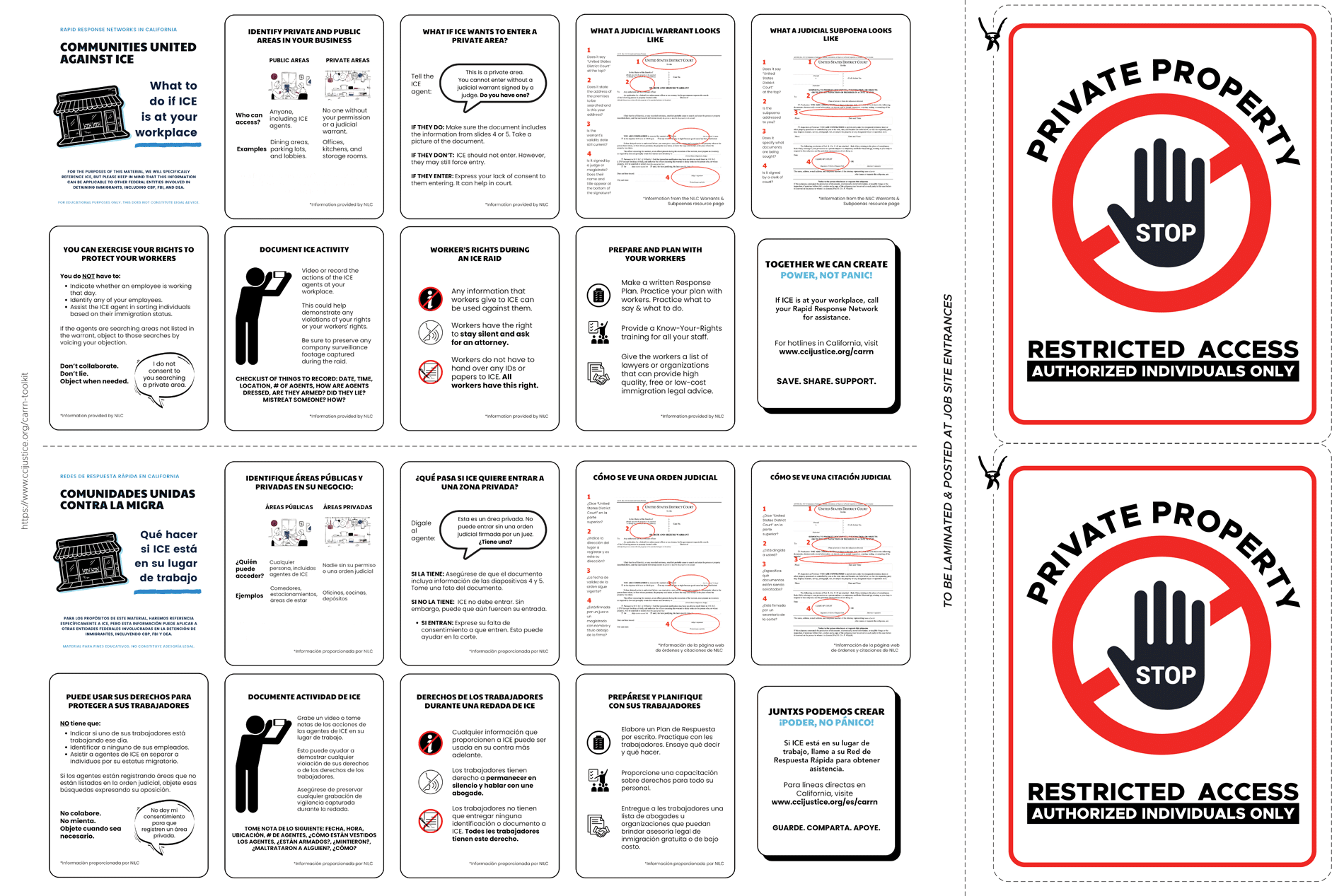It was just a few weeks ago when activists in downtown Los Angeles went viral for repurposing pink benches, designed by RIOS, into shields from tear gas canisters launched by federal officers. The American Civil Liberties Union (ACLU) estimates, as of last week, U.S. Immigration and Customs Enforcement (ICE) has nearly 60,000 people in detention, many of whom are held in private prisons.
Now, with helpful job site signage, TERREMOTO and Topophyla, two California landscape architecture offices, are helping undocumented workers know their rights should ICE and the Department of Homeland Security enter a construction project.
TERREMOTO and Topophyla are working on a messaging initiative that places instructions in drawing sets and on job site surfaces for resisting and addressing ICE detention. David Godshall and Adrian Chi Tenney of TERREMOTO Los Angeles are helping steer the effort.
“They just raided the Home Depot half-a-mile from our office, which was devastating,” Godshall told AN. “We’re trying to help run a ground game of resistance to at least be present for our workers and crews as much as we can, and protect them however we can.”
It started when Topophyla Landscape Design first designed a letter-size sheet with helpful resources, like immigration and labor hotlines. A separate ARCH D (24-inch-by-36-inch) version was then created; both are now free for download.
The effort is part of TERREMOTO’s longterm Labor and Land Initiative, which is about building solidarity with the workers who ultimately build the office’s projects. “We have tree protection plans in our sets,” Tenney told AN. “Why don’t we have worker protection plans?”
How’s It Work?
The folks at Topophyla and TERREMOTO have taken instructions from the National Immigration Law Center, an advocacy group, and reformatted them for architecture drawing sets, in Spanish and English. These KNOW YOUR RIGHTS manuals teach you how to:
- Identify public and private areas in your job site
- What to do if ICE officers enter your job site
- What judicial warrants and subpoenas look like
- How to exercise your rights and protect workers
- Document ICE activity
- Defend worker rights during an ICE raid, and
- Prepare and implement plans with workers
“ICE is erroneously grabbing everyone of color, racial profiling, and then figuring it out on the back end,” Godshall added. “It is fundamentally unacceptable to us what our federal government is doing right now, because we care about these people as human beings. It also immediately impacts our day to day work. We felt like we needed to take a stance and help protect these people.”
TERREMOTO has also started a fundraiser for construction crews that lost income as a result of the ICE raids. “These crews run their payroll above board, meaning even people who are undocumented are paying into Social Security, and other sorts of tax structures that they don’t benefit from. It’s complicated and messed up on so many levels,” Godshall elaborated.

“We started a small fundraiser to help workers recover from lost wages, when many chose to stay home because they didn’t feel safe out in public,” Tenney said. “We’ve also started including little client agreement blurbs in our plans that asks clients to ensure us they will enact their rights, and not allow any federal agents onto their private property without a judicial warrant.”
Today, similar programs are underway in other fields. This past June, ACLU, Detention Watch Network, and the National Immigrant Justice Center shared their own guide for Congress members to conduct in-person oversight visits of ICE detention facilities in their districts and states.
→ Continue reading at The Architect's Newspaper
